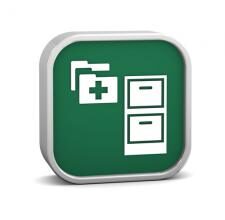Physician Burnout: Healthcare’s Looming Crisis
Physician Burnout | America’s Looming Healthcare Crisis
There is a looming crisis on the healthcare horizon that will have a devastating impact on patients and the healthcare industry in general. It is not a new strain of resistant virus. It is not an exotic bacteria, nor a rare strain of illness coming from overseas. It is a crisis which is already here. It is already claiming many lives. It has the potential to negatively impact hundreds of thousands more.
Physician Burnout: Healthcare’s Looming Crisis
Physician Burnout | America’s Looming Healthcare Crisis
There is a looming crisis on the healthcare horizon that will have a devastating impact on patients and the healthcare industry in general. It is not a new strain of resistant virus. It is not an exotic bacteria, nor a rare strain of illness coming from overseas. It is a crisis which is already here. It is already claiming many lives. It has the potential to negatively impact hundreds of thousands more.
It is physician burnout, and it is a quiet, but looming healthcare crisis that could reach epidemic proportions in coming years.
Currently more than 46% of U.S. physicians report exhibiting signs of burnout which may include:
- Chronic Fatigue
- Insomnia
- Forgetfulness/Impaired concentration
- Anxiety; and
- Depression
The Current Healthcare Pressure Cooker
There has been much discussion about the need for healthcare reform in the past years. As a country we have come to recognize that the traditional healthcare system was not only broken, but unsustainable from a cost perspective (with U.S. healthcare costs rising to more than $9,400 per person per year). Many Americans did not have access to healthcare. There was no incentive to align healthcare quality and cost. There was woefully inadequate insurance coverage. A lack of focus on preventive medicine has led to alarming mortality rates – such as the death of 610,000 Americans per year who die of heart disease according to the Centers for Disease Control.
The culmination of these factors have led to broad and sweeping healthcare reform, which set out to accomplish the following:
- Improving the patient experience of care (including quality and satisfaction);
- Improving the health of populations; and
- Reducing the per capita cost of health care
The goals themselves are noble, however they focus on change from only two perspectives. That of the insurer (who wants to reduce the cost of care), and that of the patient (who wants greater access to quality healthcare).
The healthcare provider perspective is notably absent in the design of healthcare reform.
This has essentially created a pressure cooker for physicians and other providers such as nurses who are now responsible for providing more care to more patients with less resources than ever. Add to this the fact that they must achieve higher satisfaction rates for the care that they provide, and must also incorporate new technology into practices (such as electronic health records) – and this becomes a recipe for disaster which is now playing out.
Alarming Statistics Related to Physician Burnout
- There is currently a physician shortage in the United States, which is anticipated to grow exponentially in the coming years. It is estimated that by 2025 the U.S. healthcare system will have a shortage of 90,000 physicians
- Each physician, on average is responsible for the care of 2,300 patients per year. In some health systems this number may be more than double
- Physicians often see between 20 and 25 patients per day, and the average visit may include as little as 7 minutes of face to face interaction
- More than 400 physicians commit suicide each year – leaving more than 1 million patients without a provider (link)
- 67% of doctors surveyed know a physician who is likely to stop practicing medicine within the next 5 years, as the result of physician burnout
- Physicians are more than twice as likely to commit suicide than the general population
- Medical students rate of depression is 15%-30% higher than that of the general public
- In 2013, 39.8% of physicians responded that they were burned out. In 2015, that number jumped up to 46%
- Physicians are almost twice as likely (40.2% to 23.2%) to be dissatisfied with their work-life balance than the average working U.S. adult
- Each year, roughly 300-400 U.S. physicians commit suicide
- Over half (51%) of female physicians across all specialties reported burnout in 2015
- Physicians aged 35 and under have a burnout rate of 44%
- 25% of medical residents said that if they were to begin their education again, they would choose a field other than medicine
What Physician Burnout Means to Patients
Physician burnout is a problem that impacts all of us. Recent studies have indicated that burnout can significantly impact a physician’s ability to provide appropriate care for their patients. Burnout can lead to lack of attention to detail, decreased communication, and impaired judgement. Physician burn out is a problem that puts both the physician and the patient at risk.
A New Healthcare Aim – Addressing Physician Burnout
Some healthcare advocates and strategies are now stating that the healthcare triple aim needs to be modified to include a fourth important component – the goal of improving the work life of health care providers, including clinicians and staff.
We cannot achieve better healthcare for everyone if we are ignoring the basic needs of those who are charged with providing care.





